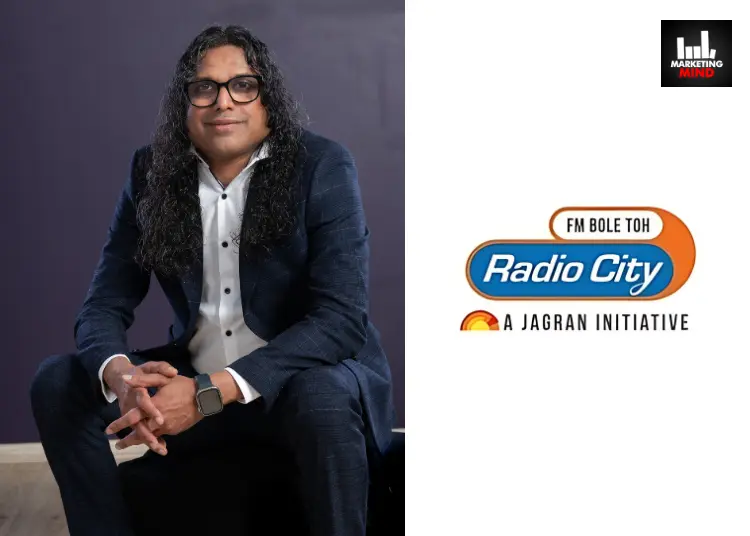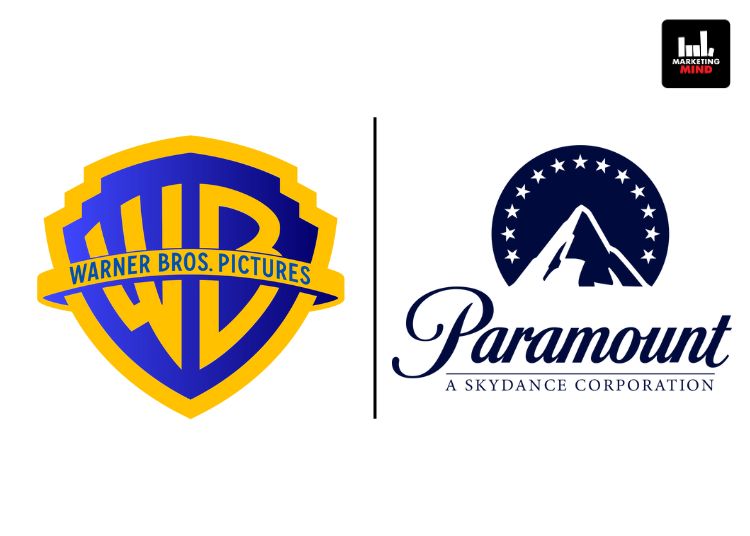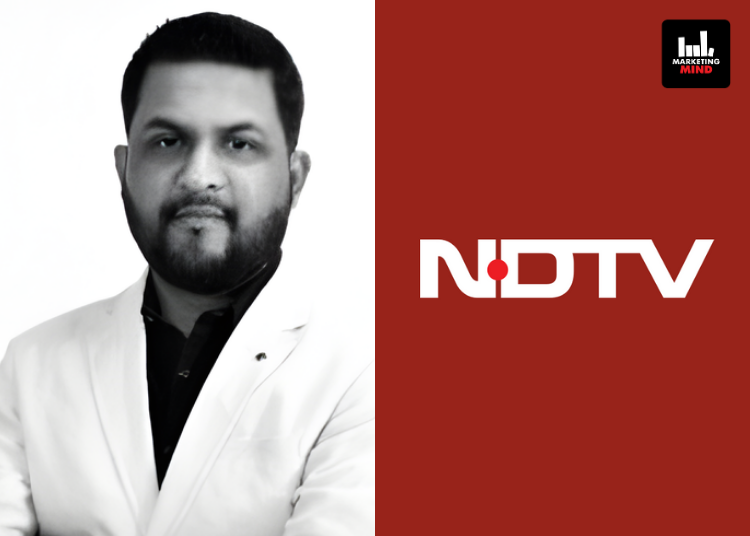Radio City’s success in the future hinges on its dedication to engaging audiences across different platforms, delivering high-quality content, and seamlessly integrating into the consumer journey through their ‘Radigitalization’ strategy, said Ashit Kukian, CEO of Radio City.
While outlining his forward-looking vision for Radio City, Kukian elaborated that their journey toward radigitalization aims to blend radio and digital seamlessly.
“From a digital perspective, the key initiatives we have undertaken in the past few months include launching a 24×7 video channel on Jio TV. Additionally, we collaborated with Happydemic, a music tech platform, to offer customised, personalised solutions for both brands and individual consumers. These solutions include personalised greetings, anthems, and more,” Kukian said.
Furthermore, he said that Radio City’s most significant achievement is the launch of the influencer marketing platform, Sminco. As the world increasingly embraces social media marketing, Sminco will be at the forefront, harnessing the potential of influencer marketing.
“Through our platform, we leverage our storytelling expertise to ensure influencers communicate the brand’s message effectively and deliver the desired benefits for the brand. We believe that Sminco will soon become a valuable asset for both our story and the brands that utilise it,” Kukian said.
Sminco is a high-tech, AI-led product offering superior technological capabilities. It features advanced analytical tools for influencers, comprehensive campaign management, and insights into what content works best for each influencer. Additionally, Sminco facilitates engagement with influencers, effectively delivering everything expected from an influencer marketing platform.
“At Radio City, our strategy revolves around aligning with the consumer journey. As consumers, particularly Gen Z, transition between different content formats – whether podcasts, short or long videos, or YouTube – we strive to be present across all these platforms. Our goal is to provide content in the format of the consumer’s choice whenever they desire it. This singular focus sets us apart, often leading us to undertake initiatives that a conventional radio company might not pursue. This future-focused approach is evident in the three or four launches we’ve already executed,” Kukian said.
“This coming year will be an exciting one for us as we have worked on numerous ideas and concepts. I am a firm believer in collaborative management, both internally and externally. Consequently, you can expect many collaborations from our side that will enhance the value of Radio City as a brand,” he added.
He emphasised that in the upcoming months, various agencies forecast a radio growth for the medium between 8% and 12%and the industry should target a growth rate exceeding 12%.
While articulating the vision of radigitalization, he emphasised that it is a concept which was developed two years ago. It stems from Radio City’s philosophy that they are no longer just a radio company but a provider of marketing solutions for brands.
“Our aim is to connect brands with consumers, facilitating meaningful interactions on the platforms consumers prefer. Instead of dictating the platform, we allow consumers to choose where they want to engage with our content. Accordingly, we are designating content across multiple platforms to align with this vision,” Kukian said.
He added, “For example, right now we are possibly the only radio station with a 24 by 7 video channel on Jio TV. So that’s a newer format of content delivery that we are doing from the house of Radio City. Number two, we are creating podcasts which we are distributing on third party platforms. So wherever the consumer is, they can, you know, lap up to our content as per their choices. So the Radigitalization journey is also capturing the fact that the media consumption from an audience perspective has changed.”
Furthermore, he went on to say that if we look back about 10 years, media consumption was around 3 to 3.5 hours, with radio accounting for approximately 1 hour and 18 minutes. Today, media consumption has risen to over 9 hours, while radio listening time remains around 1 hour and 18 to 20 minutes. However, the relative share of radio consumption has come down.
“Radigitization enables us to engage with consumers at various times, thereby enhancing our reach and improving our monetisation capabilities,” he stated.
Kukian highlighted that as a responsible radio station, they ensure that our initiatives resonate with the city they operate in and align with their commitment to social responsibility.
“Our philosophy talks about ‘Rag Rag Mein Daude City’, which drives us to constantly innovate by delivering content relevant to the local population, with a strong emphasis on social responsibility,” he said.
“Many of our initiatives are based on our ability to continually develop new and creative concepts. For instance, we organised a music fest featuring singers from various genres in an on-air concert. We also have our marquee property, Radio City Super Singer. We focus on creating content that is relevant to our audience and adapts to their evolving preferences,” he added.
While discussing his forecasts for the radio advertising market in 2024-2025, Kukian highlighted, “I believe a 10-12% growth for radio is inevitable due to its local reach and close connection with the last-mile consumer. With state government elections, advertising will increase. Economically, India will be in a better position compared to the rest of the world.”
The current government has received a strong mandate, leading to a stable administration with no signs of instability. These factors combined suggest that India will experience significant economic growth, he mentioned.
“As we all know, there is a direct correlation between GDP growth and the expansion of the Indian advertising sector. I’m confident that this parallel will hold true, as the Indian economy is performing better than the rest of the world, which is a positive sign for all of us,” Kukian added.
On being asked about the current challenges facing the radio medium and proposed strategies for ensuring its sustainable growth, Kukian said that the challenge extends beyond radio, it’s about the evolving needs of consumers and how they engage with media. This isn’t just a radio issue, most media are experiencing fragmentation at an unprecedented level. Companies must be multi-dimensional to address these challenges because consumers no longer limit themselves to a single medium.
“For instance, you might read the newspaper, watch television, stream content on an OTT platform, consume out-of-home media, and listen to the radio—all within a short span of time. This abundance of options increases media consumption and the time spent on various platforms. The ease of switching between platforms and mediums with a click makes it challenging not only for radio but for all media businesses,” he added.
“Our company has always focused on the bottom line, driven by results. We firmly believe that by the end of this year, we will have reached our peak COVID numbers. However, it’s essential to consider the business as a whole, especially when evaluating the radio segment. Diversification into other dimensions of business that align with our strengths is crucial. While a purist might focus solely on radio, it’s important to understand that this perspective may not be the most effective,” he added.
Kukian emphasised that smaller radio markets have surpassed their pre-COVID revenues and performance levels. This statement represents the broader industry, not just individual perspectives. The challenges of reaching pre-covid numbers are mainly relevant to three or four large markets, primarily due to licensing issues. Overall, smaller markets are thriving more than the larger ones.
“However, the heavy reliance on the bigger markets poses significant challenges for the radio industry, prompting the search for solutions,” he said.
As currently, there are restrictions on private FM news broadcasting, he pointed out that they have consistently advocated for news to be presented in the format audiences expect. Radio, reaching every corner of the country, is unparalleled in disseminating information effectively.
“News, as a category, attracts a diverse range of advertisers who find it ideal for their communication needs. Therefore, it’s evident that news content will enhance industry dynamics, offering richer experiences,” Kukian said.
“Our responsibility in delivering content has always been paramount, ensuring trust and reliability across all mediums. With increasing interest and engagement, advertising revenues are set to rise significantly,” he added.
He also highlighted that the growth of podcasts and OTT platforms has not negatively impacted radio as a medium.
“On the contrary, it has added up as an additional revenue generation course for the medium. Podcasts are often produced by radio professionals who excel in creative audio content. We have created a lot of podcasts and we distribute them on third-party platforms, and OTT platforms offer us new opportunities for content delivery. Rather than competing with us, these new avenues complement our strengths in creativity and audience engagement, enhancing our presence across various platforms,” Kukian stated.
He highlighted the leading advertising markets during his discussion, stating that in radio advertising, smaller markets including tier 2 and tier 3 cities, alongside tier 1 cities, outperform metro areas. This trend is driven by robust support from retail, local clients, and the education sector.
Categories such as real estate, where immediate response is crucial, along with pharma, healthcare, and automotive sectors dominate video advertising. Local retail and education sectors also contribute significantly. Additionally, finance emerges as a significant player during specific times of the year.
Radio City’s AI RJ Sia was a pioneering initiative launched in late 2023. Kukian emphasised that it’s a groundbreaking development in the radio industry.
“She represents a perfect blend of advanced technology and human creativity. By integrating adaptive AI technology with the creative touch of an RJ, we achieve a unique balance. RJ Sia excels in adapting to various moods and making quick decisions to address audience concerns. Currently, she is a key part of our weekend programming, and soon, she will become a part of weekday programming too. This seamless mix of technology, AI, and audience interaction is working exceptionally well for us,” he added.
However, some industry critics argue that AI RJs are merely text-to-audio translators.
While sharing his views on the same, he said, “When you look at our interactions with RJ Sia, you will notice a significant adaptability that engages listeners effectively. This adaptability ensures listeners perceive the content as relevant and timely, enhancing their decision-making and information processing at specific moments. Technology further amplifies this by offering distinct advantages, particularly in areas like high-tech products and digital information. This alignment with evolving human content needs is both strategic and beneficial.”
“We are seamlessly integrating this into our storytelling format. Throughout our weekend content, we provide brands with unique engagement opportunities, incorporating a technology-led product category where applicable. This allows brands to effectively communicate their messages within this content framework,” Kukian added.
With the recent completion of the Lok Sabha elections, he explained that when political advertising increases, DAVP advertising typically decreases. This is because ministries reduce their advertising efforts when political campaigns are active.
“Despite this shift, there has still been substantial growth due to political advertising for us,” he added.
When asked about how Radio City customises its advertising solutions to align with advertisers’ specific needs, Kukian emphasised, “Our approach is entirely tailored. We have evolved beyond being solely a radio company. Now, we encompass all facets of our media offerings. When engaging with a brand, our first step is to comprehensively grasp their pain points and expectations. Our strength lies in leveraging all the mediums through which we are present, both directly and indirectly.”
He added, “When presenting a solution to our clients today, we ensure it’s not merely an addition. We integrate impactful digital strategies across social media platforms like Instagram, YouTube, and Facebook, tailored to each brand’s unique needs. This holistic approach stitches together diverse formats, ensuring a comprehensive and optimistic solution. Our multi-dimensional marketing solutions empower brands to effectively communicate their niche strengths and requirements to consumers.”
















